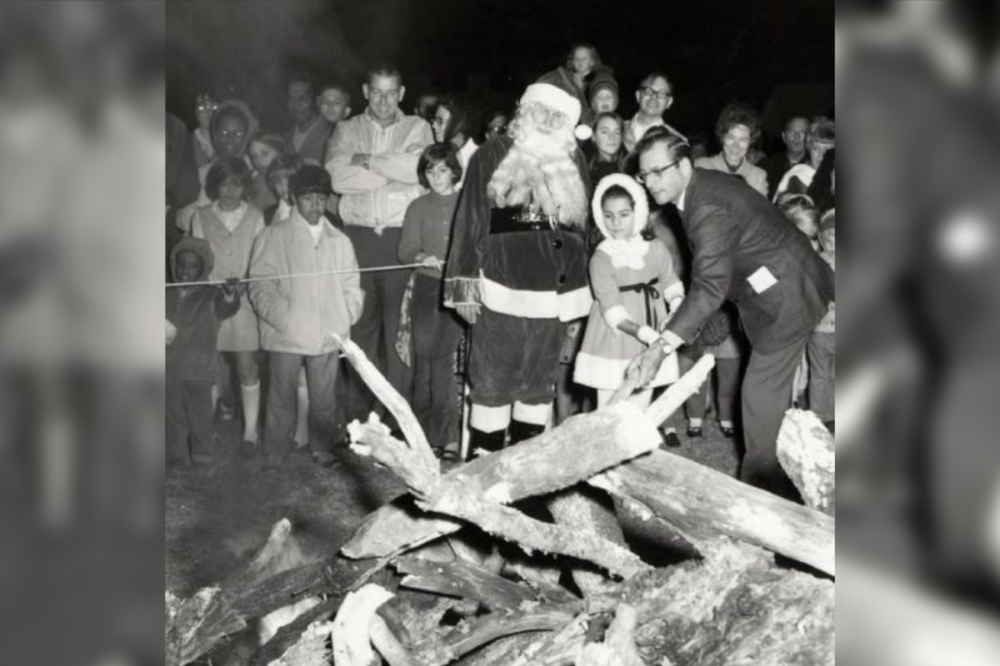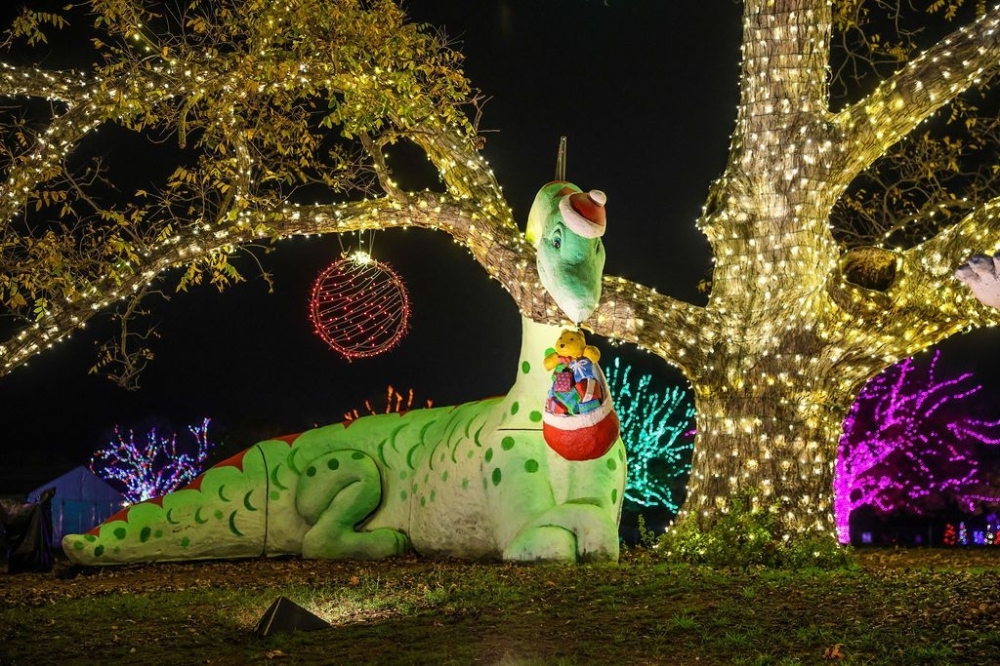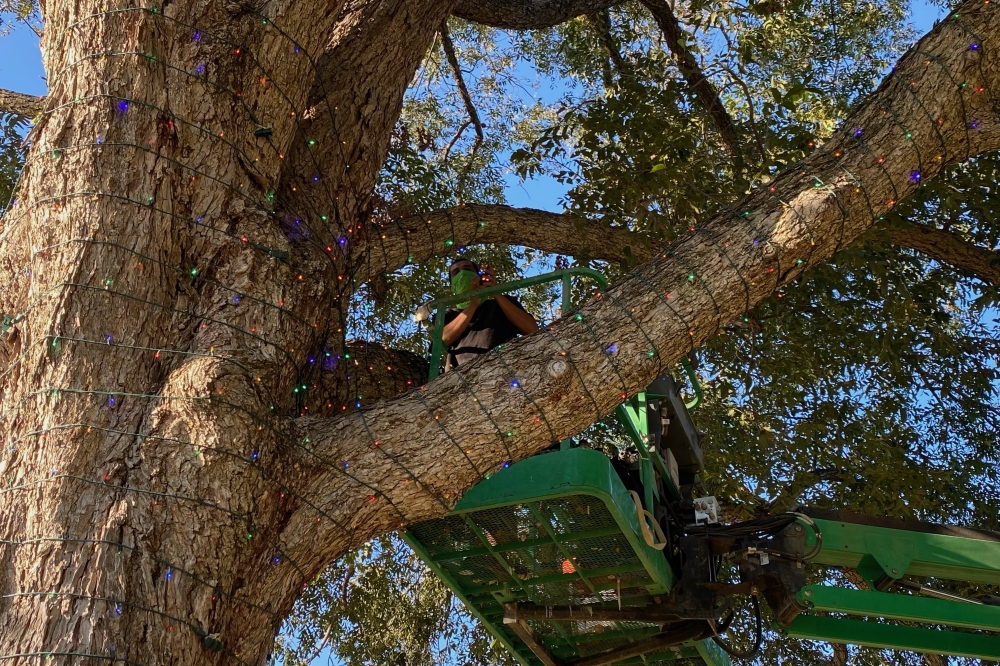How it started
The Trail of Lights began as a small gathering in 1965 known as Yule Fest in Zilker Park, a holiday gift from the Austin Parks and Recreation Department to the city. The celebration involved lighting a yule log where the Zilker Holiday Tree is now set up annually.

“Being from Austin, growing up going to the Trail of Lights, and then not having the Trail of Lights—it felt like part of me was missing. Part of our culture was missing,” said James Russell, executive director of the Trail of Lights Foundation. “So we came up with a plan and worked with the city in order to bring it back and not cost the city any money.”
Russell said they started rebuilding the event by hiring retirees from the Parks and Recreation Department who knew how to put everything together. They knew how to go about fundraising, designing, labor and even the care that goes into preserving the holiday displays.
"Santasaurus," for example—a giant Santa hat-wearing brontosaurus that has been part of the trail since its beginnings—has to be taken apart and pieced back together in its spot under the same tree every year.
“It's all the institutional knowledge that we brought to the team that continues to enable us to do this in a way that is reflective of the historic integrity of the event,” Russell said.

The Trail of Lights Foundation spends 12 months fundraising for the event. Russell said the planning for next year’s Trail of Lights will begin during this year’s event. From the health department to the transportation department, organizers look for what can be improved or done differently for the next Trail of Lights.
Russell said planning for the event the first few years it returned was challenging, but that the foundation’s partnership with the city is “irreplaceable.”
“There are tweaks every night that get made,” he said. “You can plan and plan and plan as much as you want, but there's always something that you can do better and you just make the adjustments when you can.”
During the pandemic, the Trail of Lights became a drive-thru, causing organizers to pivot the direction of their plans. The event was a drive-thru for several years back then, Russell said, but they had to figure out how to bring it back to accommodate the city’s growth.
“It took a lot of us planning this and looking at historical information and data to be able to come up with a way to do it,” he said. “Our exit became our entrance, and our entrance became our exit in order to have a continuous flow of traffic that came through.”

Russell said that the Trail of Lights Foundation begins moving into Zilker Park to hang lights the weekend after Halloween. By mid-January, all of the lights are taken down.
“I think we have over 100 people working out there during the prime time wrapping trees and setting up displays and getting the whole thing ready,” Russell said. “It's an army, no doubt about it.”
According to the Trail of Lights Foundation, the event utilizes:
- Over 2 million lights
- 90 lighted holiday trees
- 65-plus holiday displays
- 30 food trucks
- 1,000-plus event volunteers
- Two entertainment stages and more interactive attractions throughout the park
- Organizers spend almost 20,000 hours year-round planning, organizing, building and taking down the event.
- 400,000 people attend the 14-night event per year.

Throughout the years, the Trail of Lights Foundation has looked for ways to keep the event and its displays relevant while preserving the holiday charm that has been integrated into Austin culture and history.
Organizers have added more interactive displays like 360-degree photo booths to engage the generations of visitors the event attracts each year.
From Tiny Town, one of the event’s original displays, to Spaceship Santa from the 1970s, the Trail of Lights is a time capsule, Russell said.
“Taking something from the '60s or maybe early '70s and making it relevant to today is awesome,” he said. “It's part of Austin's culture, it’s part of Austin's history, and it's great to see it's still there.”
As the 60th Trail of Lights approaches, Russell said his team is grateful for this slice of time they get to spend being a part of the event.
“It's not our event, it's the city's event. We're just currently the stewards of it,” Russell said. “But I hope what we're doing is putting it on the footing so that it's here for the next 60 years.”
Check it out
This year’s Trail of Lights will run nightly from Dec. 10-23. For more information, visit www.austintrailoflights.org.





